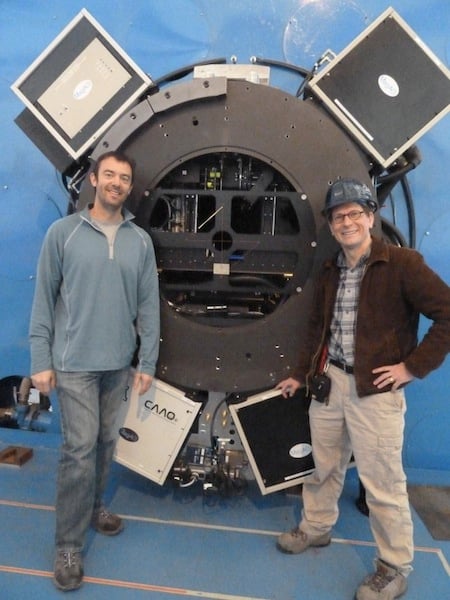New Telescope Cam Takes Highest-Ever Resolution Photos of the Night Sky
![]()
When it comes to visible light photos of the night sky, Hubble has been king. That’s because Earth-bound telescopes — even those with much higher-quality optical systems than Hubble — must deal with the blurring effects of our planet’s atmosphere.
A newly developed camera called VisAO, however, has done away with that problem, and in the process enabled astronomers to take the highest-resolution visible light photos ever captured of the night sky.
The camera system was developed over the course of 20 years thanks to the combined effort of astronomers from the University of Arizona, the Arcetri Observatory in Italy and the Carnegie Observatory. And when the latest version of the camera was finally deployed in the high desert of Chile at the Magellan 21 foot telescope, the results blew away the astronomers’ expectations.

The Magellan telescope can theoretically resolve images much sharper than Hubble can because its mirror is 21-feet in diameter, as compared to Hubble’s 8-foot mirror. The only problem is that Magellan has to deal with the atmosphere, where Hubble does not.
The VisAO camera solves this problem by using an advanced adaptive optics system with an “adaptive secondary mirror.” This 1/16th-inch thick piece of curved glass floats on a magnetic field 30 feet above the telescope’s primary mirror and is able to change its shape 1,000 times each second at 585 points on its surface.
“As a result, we can see the visible sky more clearly than ever before,” says the project’s lead, UA astronomy professor Laird Close. “It’s almost like having a telescope with a 21-foot mirror in space.”

The photos resolved by the newly dubbed Magellan Adaptive Optics system (or MagAO) are twice as sharp as what Hubble can capture. To put that in perspective, Close explained that the camera can resolve the equivalent of the width of a dime from 100 miles away, or a baseball diamond on the surface of the Moon.
Since it was launched, the MagAO system and its VisAO camera have already made important discoveries and resolved images the likes of which have never been seen in the scientific community before. To find out more about the new system, what it can do, and what it has already done, head over to the University of Arizona’s MagAO webpage by clicking here.
(via SpaceRef)
Image credits: Top photograph by Yuri Beletsky, Las Campanas Observatory.